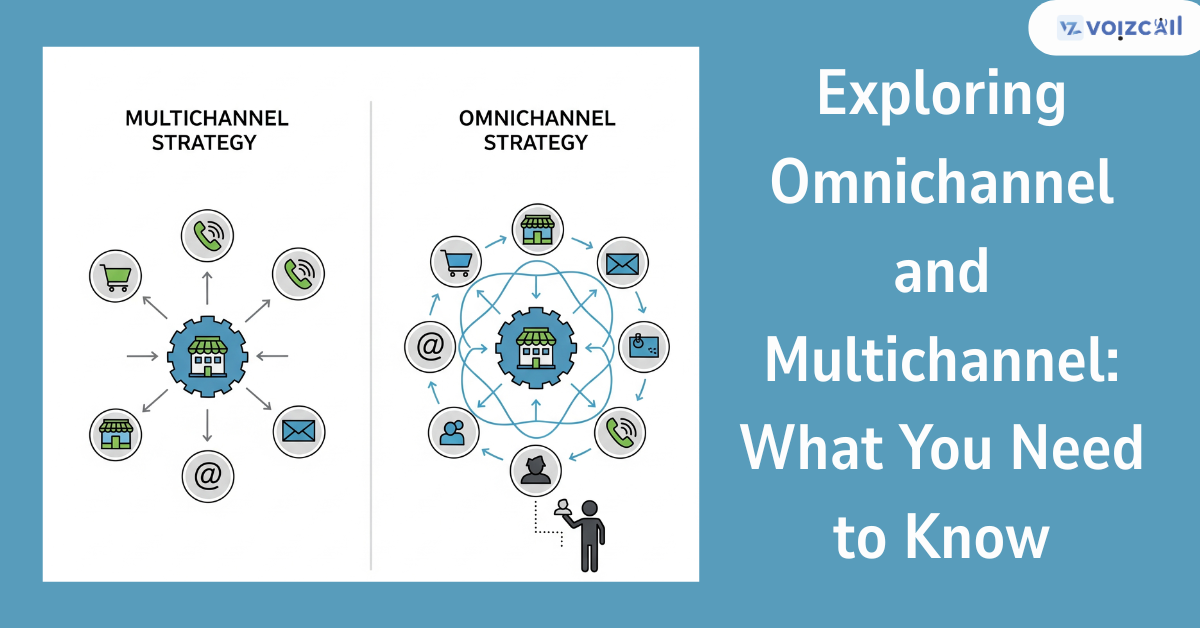


05/Aug/2025
In the current high-paced digital environment, the businesses should aim to reach the customers wherever they are mobile, offline, online, or even in the social media. That is where omnichannel and multichannel strategies appear. Both of these approaches determine the way of communicating, selling, and assisting customers of businesses, yet they are not identical.
Wondering which one is better suited to your business or even how you go about starting it, this blog will make it all simple. So what are the differences between omnichannel and multichannel, the unique things that each entail, and how you should go about picking the best option as you grow your business to 2025 and beyond?
Multichannel has many distinct platforms that are used in reaching and communicating with customers.
Such channels may be:
Social media (Instagram, Facebook, X/Twitter)
Email marketing
Phone support
In-store experiences
App or site
The most critical piece of information here, however, is that these channels are independent ones. Accordingly, when your customer uses a particular channel, he/she will have varying experiences in various channels.
Example:
A client could see the item on your Instagram advertisement but they cannot find it on your site- worse still, the support system cannot assist since it is with another group. That is multichannel experience.
Omnichannel takes a step further. It is not about multiple platforms but it is about connecting these all together to help provide a smooth and consistent customer adventure.
Omnichannel means that your social media, email, web, in-person chat, and brick and mortar will all be integrated as a comprehensive channel. This is because the experience of the customer is integrated across different channels.
Example:
On mobile, a customer adds an item to cart, and receives a reminder email, chats with support on web and eventually completes their purchase in store, all with the data in step. So powerful is omnichannel communication.
The main differences between Omnichannel and Multichannel
Call / Email for Sales Inquiry Today
So here is a fast comparison of them both:
Feature Multichannel Omnichannel
Channels employed Multiple Multiple
Integration No (siloed) Yes (unified)
User experience Fragmented Seamless
Data sharing Limited Shared across platforms
Focus Channel-based Customer-based
Why Omnichannel is the Future
In 2025 and after, customer experience is paramount. Omnichannel approaches are succeeding because they:
• Deliver personalized customer experiences
• Enhance customer satisfaction and loyalty
• Boost conversion rates and sales
• Offer valuable, unified analytics
• Minimize customer frustration and confusion
Consumers nowadays expect brands to remember them, know their needs, and pick up where they left off. Only omnichannel approaches can actually fulfill those expectations.
When Multichannel Still Has Its Place
Multichannel remains relevant, particularly to small businesses or new ventures. It enables you to:
Experiment with and test out multiple platforms
Grow a following across many channels
Function on minimal tools or spending
Guarantee flexibility when you scale
Don t forget you will have to integrate into omnichannel as you scale or you will be left behind.
Final Thoughts
In case you take the decision to enhance your customer engagement strategy, you surely must know the difference between omnichannel and multichannel. Multichannel marketing allows you to cast a wide net and omnichannel communication allows that net to hook and keep the right people on a seamless connected path.
In brief:
Multichannel = numerous channels, disparate experiences
Omnichannel = numerous channels, single cohesive experience
desires and long-term goals. However, with the escalated stakes as customers are becoming more and more accustomed to an experience that is catered to them, an investment in omnichannel customer engagement may be your path to the future.
Are you ready to change?
To make sure that you future-proof your business communication and marketing, it might be worth developing an omnichannel approach created with the help of customer engagement today. Incrementally build it, step by step integrate it and put your customer experience as your focus.